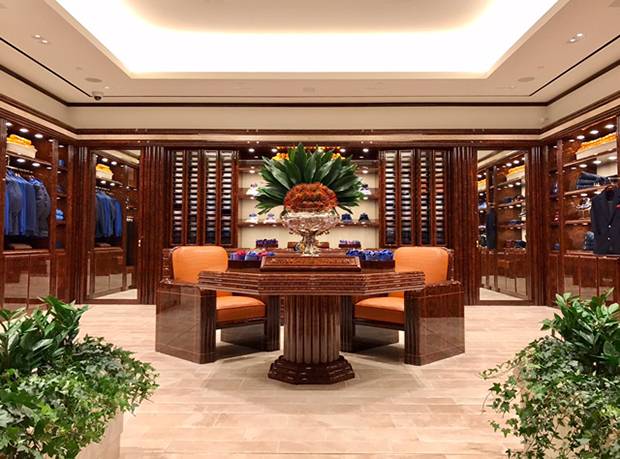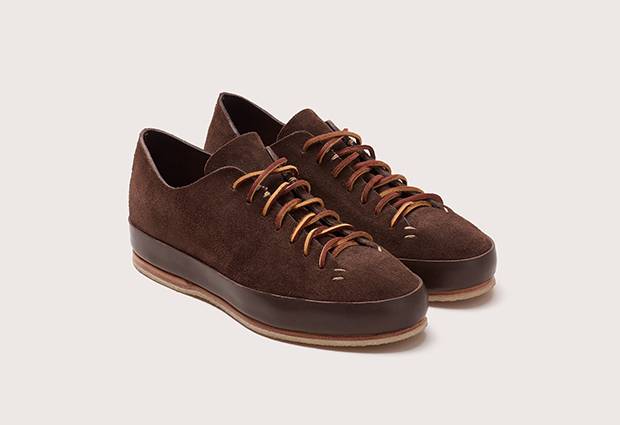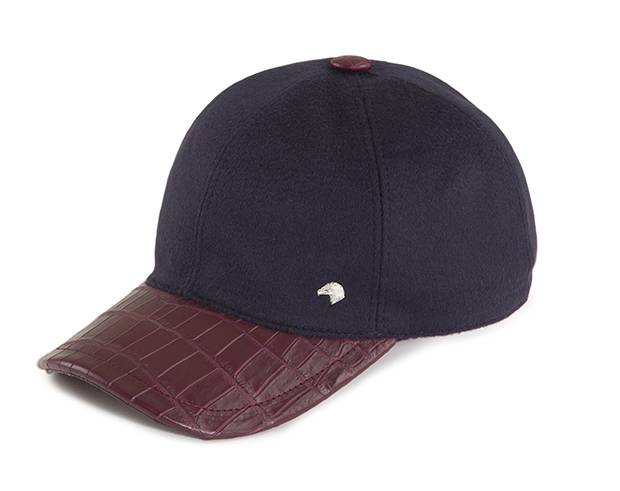What's a reasonable price for a baseball cap? This, mind you, is a hat that's never appeared in a famous film or been owned by a celebrity. It's a new hat, made in a garment workshop alongside untold numbers of others just like it. For Stefano Ricci, the ultra-high end men's wear brand who opened its first Canadian boutique last month in Vancouver, the answer to this question is $2,360. Their "Baseball Cap With Crocodile Visor" has a 73% nylon, 27% elastane upper stitched onto a brim upholstered in crocodile leather and adorned with galvanized palladium hardware. This may or may not seem like an unreasonable sum of money to spend on a baseball cap (at least one that's not signed by Beyoncé) but that depends entirely on who's shopping.
"High-end clients like to express their freedom by being surrounded by beauty and quality during their leisure time," says Niccolò Ricci, the brand's CEO. "Whether it be driving a limited edition sports car, golfing, or even going out on a yacht or a sport fishing boat, this accessory becomes a distinctive feature."
The crocodile-embellished hat is an ultimate statement piece, but according to Ricci that statement isn't simply, "I spent $2,300 on a hat." While his customers might initially be drawn in by the allure of the brand's exorbitant prices – and the sense of exclusivity that comes with it – it's posited that their tastes become more sophisticated over time. "In emerging markets there is often a race towards the brand because the brand is synonymous with luxury," he says. "In the course of time, the so-called 'nouveau riche' begin to refine their search. They begin to distinguish the quality of materials, the details of workmanship."
Now, he says, his customers in places like China and Russia have grown out of spending just for spending's sake, and are looking to invest in well-made things that are built to last. "Clients shop for value," Ricci says. The price may be high, but it is the result of high-end materials and specialized Italian labour, not to mention the elevated level of service his company offers to customers in-store. "This is why, when we speak about a Stefano Ricci product," Ricci concludes, "we prefer to express a concept of value rather than cost." Considering the brand now operates 56 boutiques worldwide – plus home and yacht interior design divisions – Stefano Ricci appears to have a good understanding of its customers' notions of value, rarified as they may be.

Stefano Ricci’s Vancouver boutique is its first in Canada.
Stefano Ricci
When it comes to luxury, however, not all consumers value the same things. The idea of an investment piece exists at every level of men's wear, even if the amount of investment required varies by brand. Where Stefano Ricci's customers are happy (or at least willing) to spend $3,200 on a pair of sneakers (also croc-embellished), New York-based Feit prices its range of sneaker-inspired shoes and boots starting at a comparatively reasonable $680. Feit's understated designs couldn't be more different from the flashy offerings of Stefano Ricci, but the brand attracts customers with similar promises of refinement, value and exclusivity.
"People, not machines, craft Feit products," says founder and head designer Tull Price. "No corners are cut, and no cheap synthetics are used. It is my belief that the best way to create products with the deepest integrity is via a process combining human time and skills, natural treatments, and natural materials." In pursuit of this ideal, Price sources vegetable-tanned leather from small tanneries in Italy, Sweden and England, and forms his shoes over lasts made by master craftsmen in Italy. He makes his shoes in China, but goes to great lengths to recruit skilled workers there and train them in the art of Goodyear-welted shoemaking.

A pair of hand-sewn suede sneakers from Feit sell for $820.
Feit
Price refers to his product as "neo-luxury," a term that seeks to separate his company's offerings as distinct from those of other more traditional luxury brands. "It describes an evolution of consumerism and production, moving away from volume and excess and towards quality, sustainability and the pursuit of product integrity." For customers who spend $820 for a pair of Feit's new brown suede handsewn low sneakers, what they get in return is access to this ethos, and by extension, a pair of well-made, distinctive-looking shoes.
It could be argued that $800 is a reasonable price for a pair of nice shoes and $3,000 is not, but to do so would miss the larger point about the purpose of such things. You can put a price on the materials, production and infrastructure that brings the shoes to you, but it's impossible to quantify the feeling you get when you slip them on. That's what's really for sale. The nature of luxury is giving people what they want, and making them feel good about their taste and means in the process. The price is merely the cost of admission to the club of their choosing.
Visit tgam.ca/newsletters to sign up for the Globe Style e-newsletter, your weekly digital guide to the players and trends influencing fashion, design and entertaining, plus shopping tips and inspiration for living well. And follow Globe Style on Instagram @globestyle.

